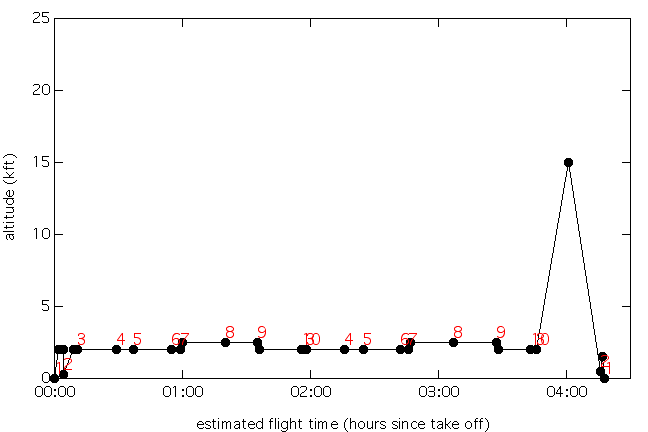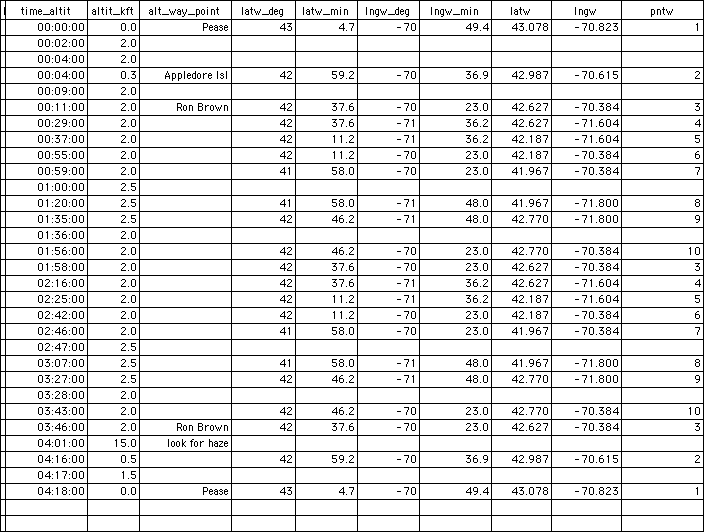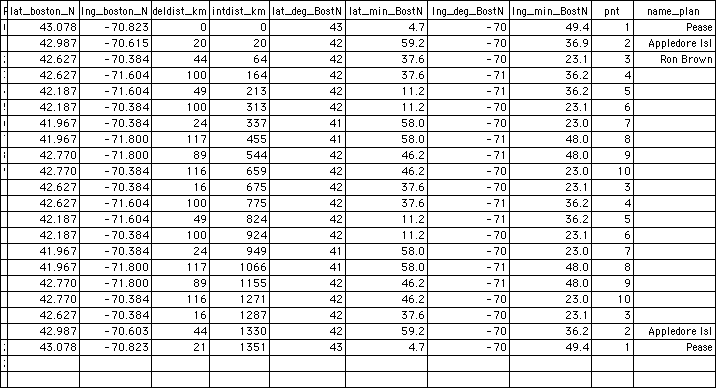WP-3D Daily Summaries
7/11/04 WP-3D Flight Summary (Preliminary Observations)
The principal aim of this flight was to investigate the evolution of chemical composition and chemical processes that occurs in the urban plume during the transition from the day into the night. Earlier in the day the DC-3 and the research vessel Ronald H. Brown had observed the presence of aerosols contained in several layers between the surface and 15,000 ft. The near surface layer was associated with urban pollution from Boston while the elevated layers were attributed to the long-range transport of emission from Alaskan forest fires.
Takeoff: 07:00 PM; Duration: 4.75 hrs
After takeoff, the Boston plume was first encountered at about way-point 4 at approximately 1930 EDT as the aircraft turned to the south flying to the west of Boston. In the urban plume, the principal NOy components were NO2 and HNO3. The plume had a high NO2 to NO ratio and (even before dark) the N2O5 mixing ratio was 15 pptv and NO3 mixing ratio was 3 pptv.
Later in the flight to the southeast of Boston during a spiral climb, a significant biomass-burning layer was intercepted at 9000 ft. This layer had CO mixing ratios up to 380 ppbv. A second layer appeared at 13 kft. The plumes were sampled again on descent. As on 7/9 NOx and PAN were the major NOy constituents the while HNO3 was relatively low. Acetonitrile, a biomass-burning indicator, was present. Fine particle volume was highly correlated with acetonitrile.
The Boston plume was encountered again on the second pass on the west of Boston. This transect beginning at Pt. 8 was further away from the city center. The center of the plume was almost due west of Boston (42.3/ 71.8). In this plume, the N2O5 mixing ratio reached values above 250 pptv with NO3 above 40 pptv. Later on a NW to SE transect over Boston and Logan airport, NO3 levels of 50 pptv were seen.
In general:
- NO3 was observed even even before the sun was fully set and at low NOx mixing ratios.
- In the early in the evening, NO3 mixing ratios were higher than N2O5 mixing ratios.
- Relative low aromatics concentrations were observed in the Boston plumes.
- To the west of Boston, elevated missing ratios of biogenic VOCs and their oxidation products (e.g. isoprene, methyl vinyl ketone) were observed.
Actual Flight Track

Flight Plan Map

Flight Plan Altitude

Flight Plan Way Points

Flight Plan Lat/Lon Points


